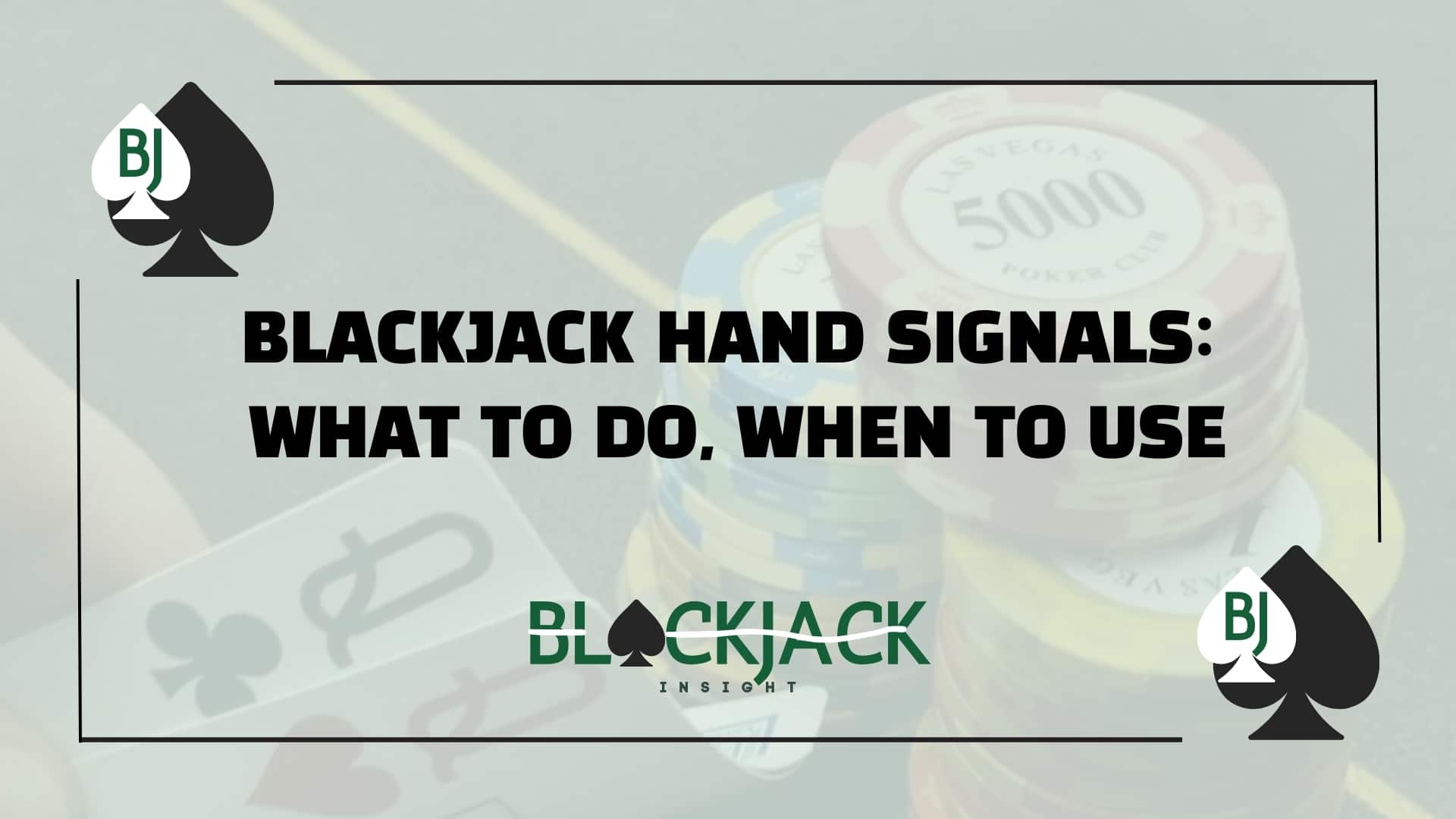Blackjack Hand Signals: What to Do, When to Use
Table Of Content
You’ve got your chips stacked, your strategy down, and your eyes locked on the dealer’s upcard. You’re feeling confident. But then… you freeze. The dealer’s looking at you, waiting. What now? You want to “hit,” but instead of saying it, you’re supposed to signal it. And that’s when you realize—you don’t know the proper blackjack hand signals.
The first time I played in Vegas, I knew the game inside and out. But when it came time to signal my move, I gave the dealer a blank stare. A few awkward seconds later, she gently waved her hand in a gesture that said, “Try again, rookie.”
Don’t worry—we’ve all been there. Learning hand signals in blackjack isn’t just a formality. It’s a must-know part of table etiquette, helps protect both the casino and the player, and keeps the game moving.
If you’re new to live blackjack or just want to make sure you’re doing it right, this guide will walk you through all the hand signals blackjack players need to know—and why they matter.
Blackjack Hand Signals for Face-up Games
Here are the 5 important hand signals you should know while playing blackjack.
Hit
- What to Do: Give a light tap or a gentle scratch on the table near your cards.
- When to Use It: Typically, when your hand is below 17 (if it’s a Hard hand) or when you’re feeling confident about improving a Soft hand.
My Tip: I used to hover my hand, hoping it was enough. One time, the dealer hesitated, and I ended up second-guessing my move. Now, I stick to a firm tap. To make an effective move, check how to play blackjack.
Stand
- What to Do: Wave your hand horizontally with your palm down over your cards, or simply lay your hand flat in a “stop” motion.
- When to Use It: When your total is strong—say, 17 or above—or when you’re feeling that extra caution is needed.
Lesson Learned: I once gave a half-hearted wave that the dealer misinterpreted as a request for another card. It’s a small detail, but a confident, deliberate gesture really makes a difference.
Double Down
- What to Do: Place an extra bet next to your original wager and hold up one finger to signal that you want just one more card.
- When to Use It: You can double down in blackjack usually on totals of 9, 10, or 11, or on certain Soft totals where the odds look good.
Remember: I once hesitated with my finger signal, and the dealer ended up dealing an extra card by mistake. Now, I make sure my signal is bold and clear.
Split
- What to Do: Lay down an extra bet equal to your original, then form a V with your fingers or simply point to each of the paired cards.
- When to Use It: Only when you’re dealt a pair, like two 8s or two Aces.
My Experience: I’ve seen players get too excited and split pairs on a whim. It’s important to check your strategy before splitting—it’s not just about the thrill of the move.
Surrender
- What to Do: If the rules allow it, you can draw an imaginary line on the table with your finger or just say “surrender.”
- When to Use It: When you’re in a tough spot, like having a Hard 16 against a dealer’s strong upcard. If you aren’t sure, glance at this post.
A Cautionary Tale: I used to ignore the surrender option, thinking it was like giving up too soon. But there were times when surrendering saved me from a big loss. It’s a smart move if the situation calls for it.
Blackjack Dealer Hand Signals
Ever noticed how dealers make their own hand motions after every action? Those are blackjack dealer hand signals, and they’re just as important as yours.
When they deal a card, they slide it with a quick wrist flick. When a player busts, they sweep the cards away in a fluid motion and collect the chips. These moves are all recorded by surveillance and standardized across most casinos.
Dealers use hand signals to announce hits, stands, busts, and blackjacks—it’s part of the game’s choreography. Understanding this can actually help you follow the flow more smoothly.
Hand Signals in Hand-Held Blackjack Games
Some casinos, especially outside the U.S., deal blackjack face-down. These hand-held games require slightly different behavior.
You’ll actually hold the cards (gasp!), but only with one hand, and you should never remove them from the table.
- To hit, lightly scrape the cards against the table felt.
- To stand, slide your cards under your chips without flipping them.
- For double or split, place your bet and turn the cards face-up.
Different casino? Ask the dealer before the first hand begins. They’ll appreciate it, and you won’t have to guess when it’s game time.
Why Hand Signals Matter in Blackjack
In a loud casino, verbal commands don’t cut it. That’s where blackjack table hand signals come in. They make your decision crystal clear for the dealer, the pit boss, and, most importantly—the security cameras.
Yes, those cameras are watching. Not to make you paranoid, but casinos use overhead surveillance (often called “the eye in the sky”) to review games and resolve disputes. A player saying “stand” while reaching for chips can look like a switch-up unless there’s a clear signal.
FAQs
1. Do I really need to use hand signals if I say “hit” or “stand” out loud?
Absolutely. Even if you call out your move, the physical signal helps clear up any confusion, ensuring that everyone—from the dealer to the pit boss—knows exactly what you’re doing.
2. What should I do if the dealer misreads my signal?
Stay calm and clarify politely. I’ve had moments where my own vague signal led to extra cards being dealt—learn from those mistakes and always try to be as clear as possible.
3. Does Natural Blackjack require a special signal?
No special signal is needed for a Natural Blackjack. A knowing smile is usually enough because the dealer and the rest of the table can see that you’ve got a winning hand.
4. Are there different hand signals at high-limit or VIP blackjack tables?
Nope, they’re the same. The etiquette and motions stay consistent across all table limits. What changes are the pace, bet size, and often the level of service—but your hand gestures? Still the same wave and tap.
5. Is using hand signals required in home blackjack games?
Not at all. If you’re playing casually with friends, verbal decisions are fine. But if you’re simulating a real casino experience or hosting a tournament, using hand signals adds authenticity and clarity.
6. How can I practice blackjack hand signals before going to a casino?
Set up a deck at home and deal yourself practice hands. Use chips or coins to simulate bets and go through each motion—tap to hit, wave to stand, etc. Or better yet, watch a live-dealer stream and mirror the players.



